DSOM Architecture and Capabilities
DSOM consists of one or two major software elements, each running as services on a server-based system or PC desktop and under the latest version of Microsoft® Windows® or Linux. DSOM supports the normal security features for a Wide Area Network (WAN) site and can be used without impairing the system. The major software elements are the Human Machine Interface (HMI) engine for DSOM and an OLE for Process Control (OPC) server interface, if required, to read field data. DSOM comes with all necessary drivers for interfacing to most Structured Query Language (SQL) databases, including MsSQL and/or MySQL. MySQL is currently the standard under DSOM for data and history logging/data storage. Field data is read via the supervisory control and data acquisition (SCADA) industry OPC standard.
Basic function of the OPC application is to read filed data in a compatible format back to the server. For the building automation system, DSOM uses a BACnet to OPC server. The basic function of the DSOM engine is to store and analyze the data, and present the HMI screens for the web services. Passwords or the network active directory can be used for access. Below is a diagram of the architecture.
Weather Data
DSOM can interface with most weather systems or use local weather stations. DSOM will calculate degree days via the hourly integrated method or a daily method, if desired.
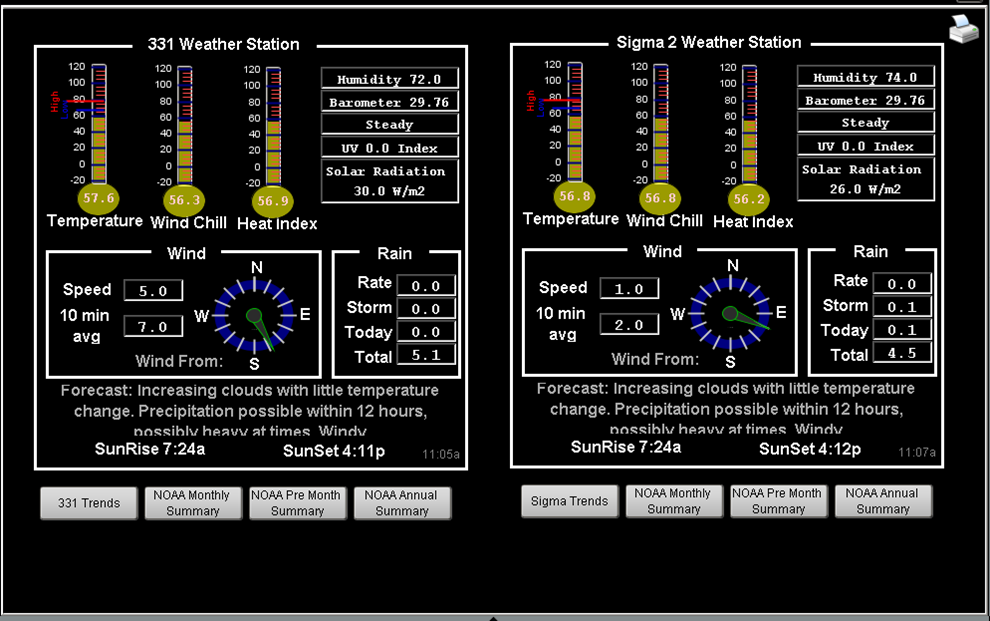
Computer Room Power Usage
DSOM can track computer room energy and equipment.
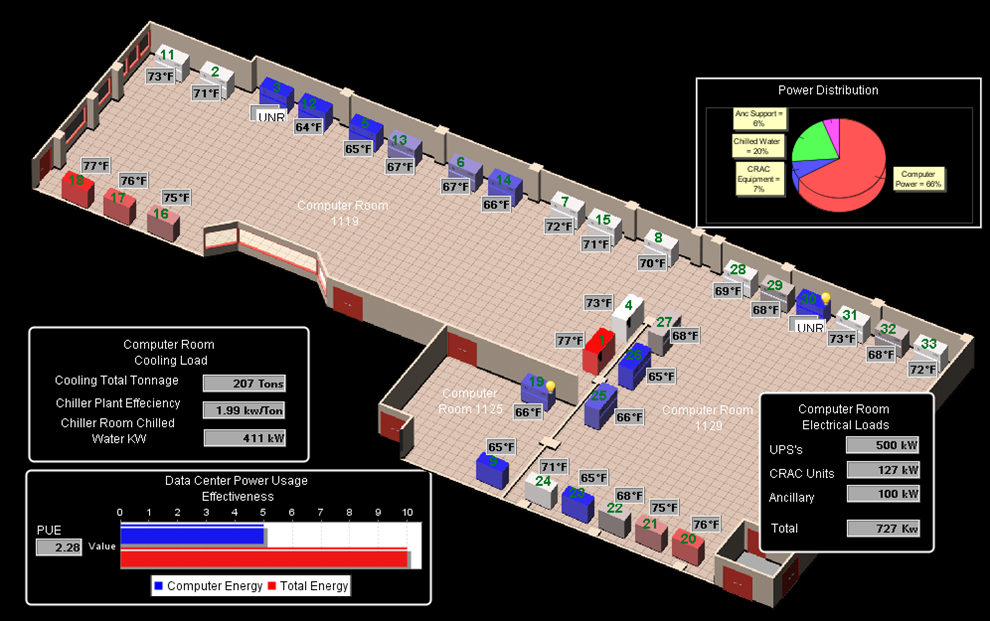
Building Layouts
Floor plan layouts (including color change for zone temperatures and zone layouts) are a common way for DSOM to allow for the building engineering teams to work with customer complaints and see the big picture of how a facility is reacting to weather and staff.
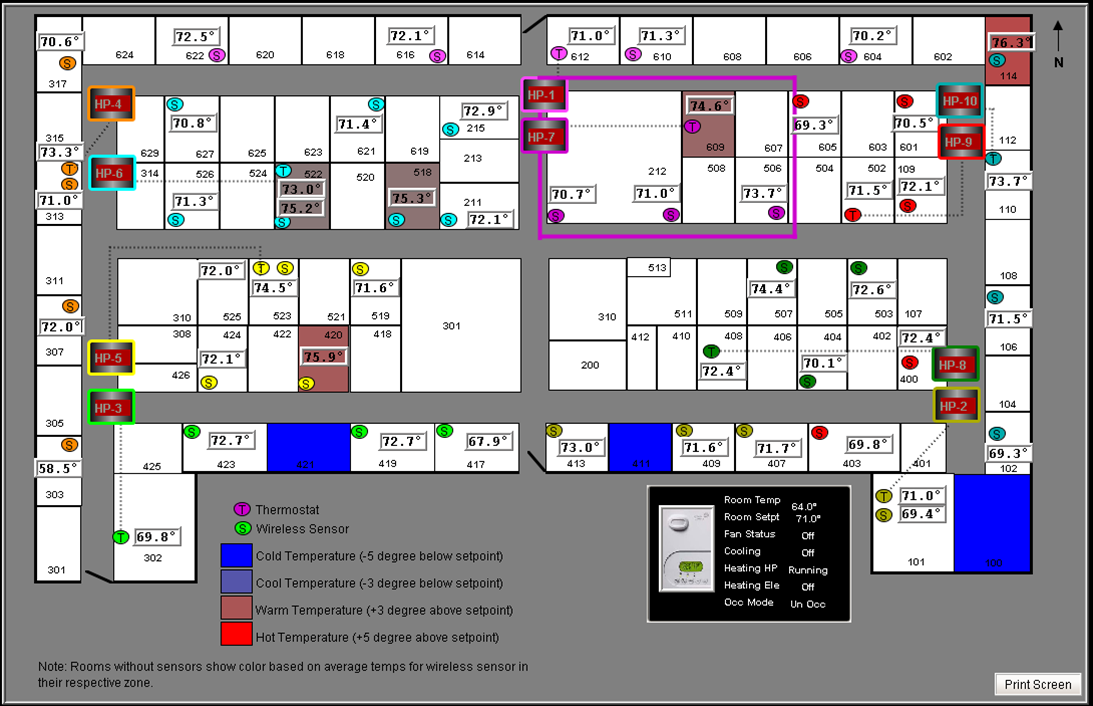
HVAC System
An extensive array of HVAC equipment can be monitored and, in most cases, the health of the equipment can also be tracked. Setpoint changes can be made with proper authority and system can be reset if required.
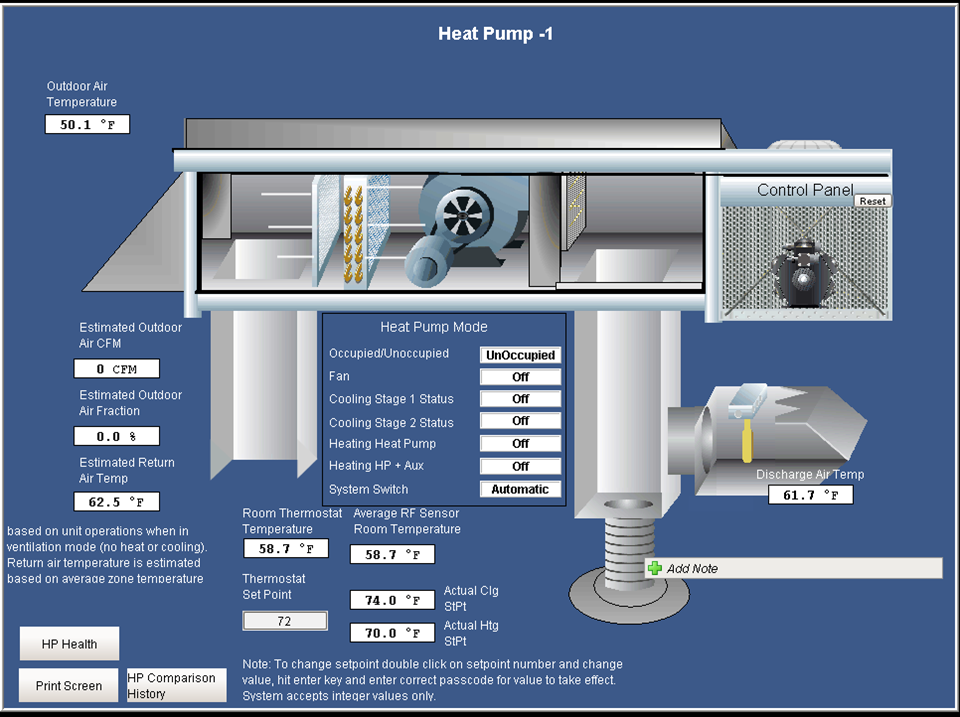
Utility Metering
Energy tracking can be done in many forms and formats. DSOM can generate tailored reports from the energy data — and export them as a PDF — to meet your reporting needs. Energy can be trended, tracked, and summed by intervals to give you the larger picture of usage, but also allow for drill down to 15 minutes or smaller increments to see events as they happen.
Click images to expand
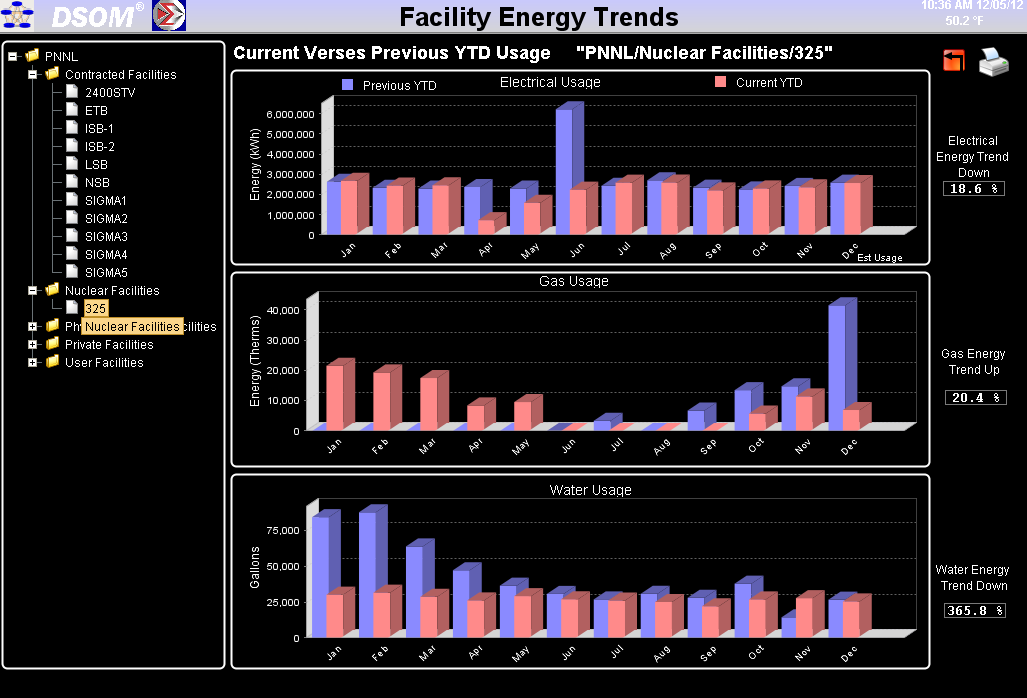 | 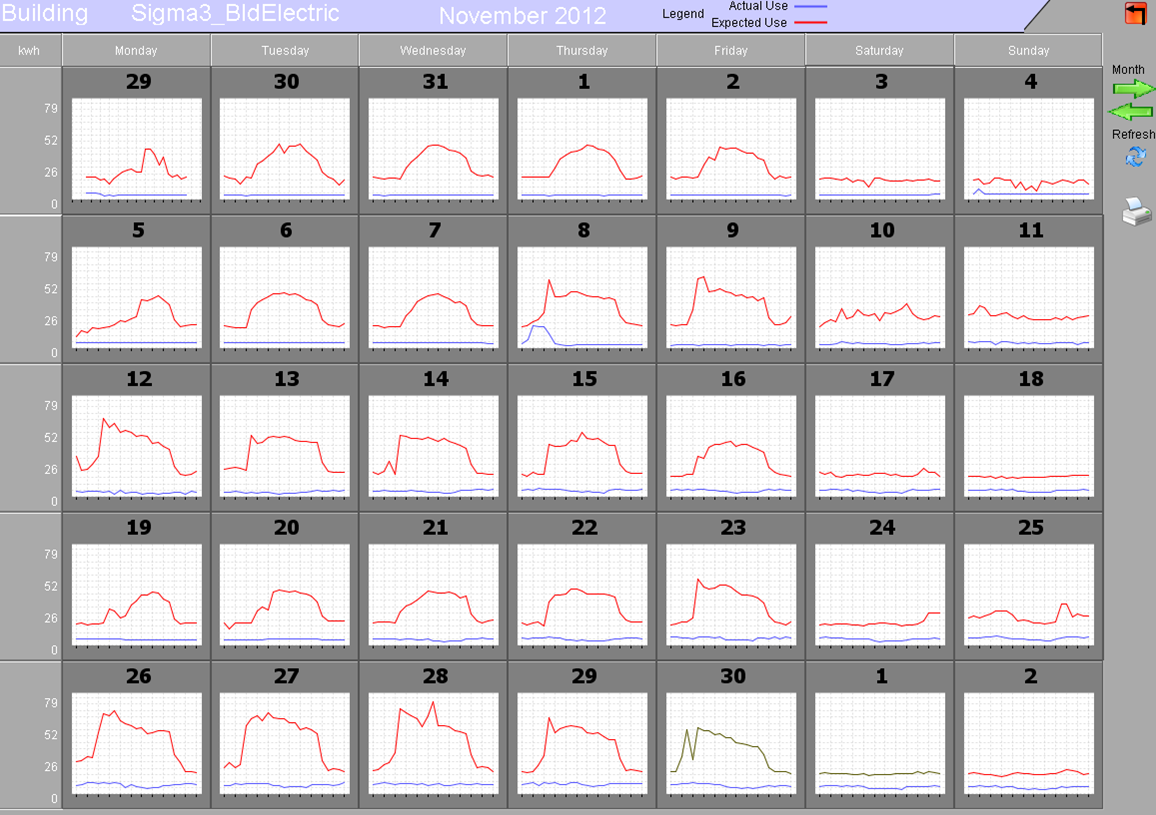 |
Schedule Verification
DSOM has a unique feature to allow for tracking of wasted energy by mechanical system run hours. Any piece of equipment that has a schedule can be tracked against the schedule. Below is an example of a complete campus showing the different areas and buildings within the areas. For each system in each building, run hours are tracked against the administrative hours that it should be running. If the run times become excessive or over the error allowed, a red bar will appear to alert operations and administration to the system. The longer the bar, the more hours the system has exceeded the schedule.
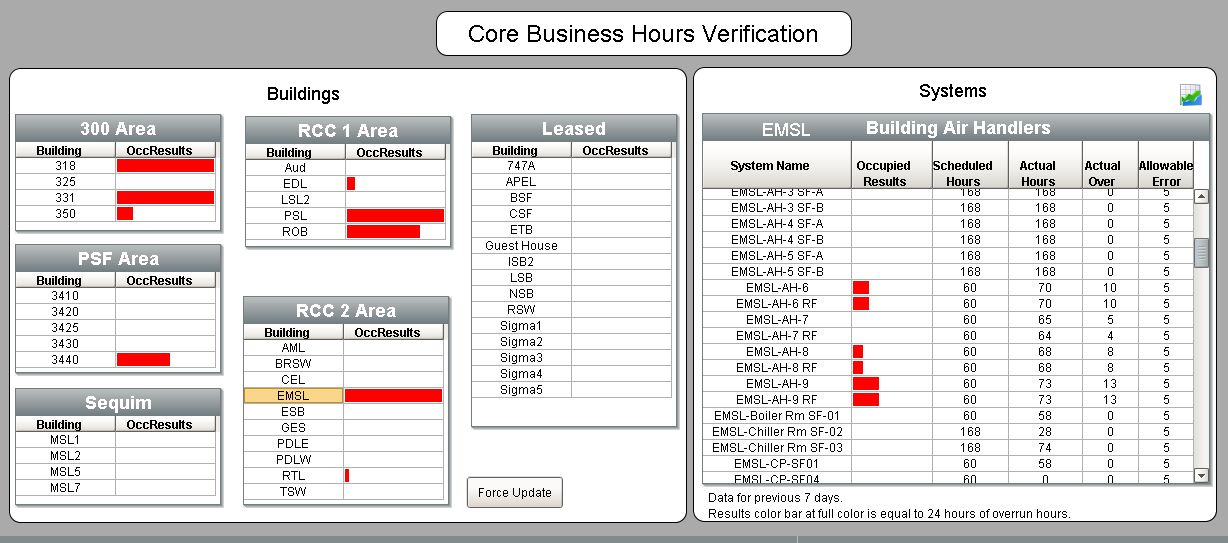
Tracking Costs of Inefficiencies
DSOM can track the cost of inefficient operations. If energy costs are entered into the system, then DSOM can watch equipment for efficiency; it the equipment drops below an efficient baseline, then the cash register will track the cost of operating in this mode. At a periodicity selected by the facility, reports can be created and sorted by cost to know what events cost the most and where to apply the maintenance funds to best advantage.
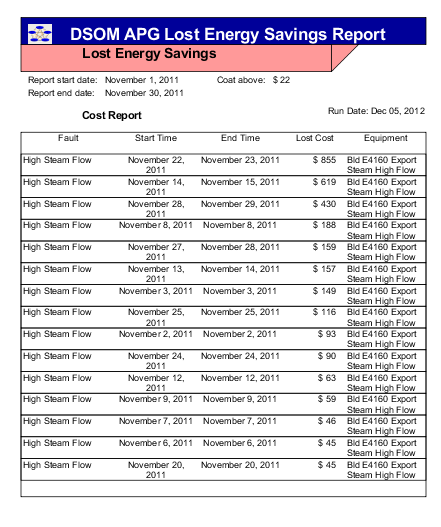
Fault Messaging
DSOM has a messaging system that can be tied to alerts and faults. The system can help operations to understand what a fault is, how to act on it, and any pertinent information that may be required to handle the condition. Procedures can also be linked to these events.
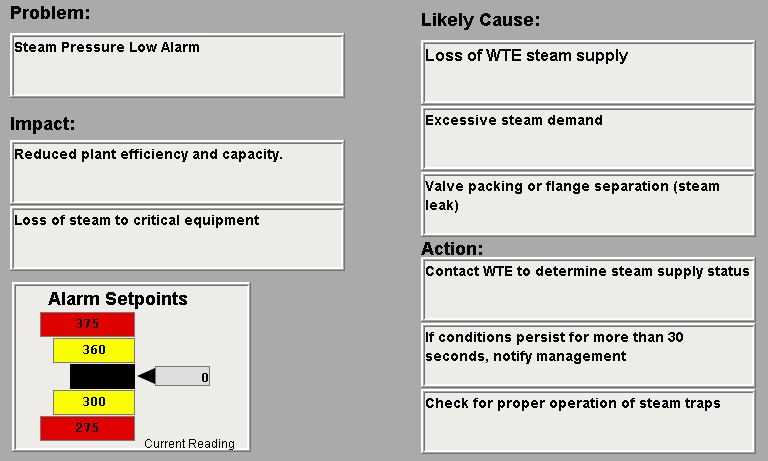
Trending
DSOM uses a powerful graphing tool to show history for all data points. Below is a typical analog sensor with alarm banding. These graphics can run in real time-mode or history mode, where you can select a time period for analysis. You can even select multiple data points from any graphic screens and make your own trend study. These trend studies can be saved and recalled with new data for reanalysis. All data in the graphs can also be exported to Excel or a .csv file.
Click images to expand
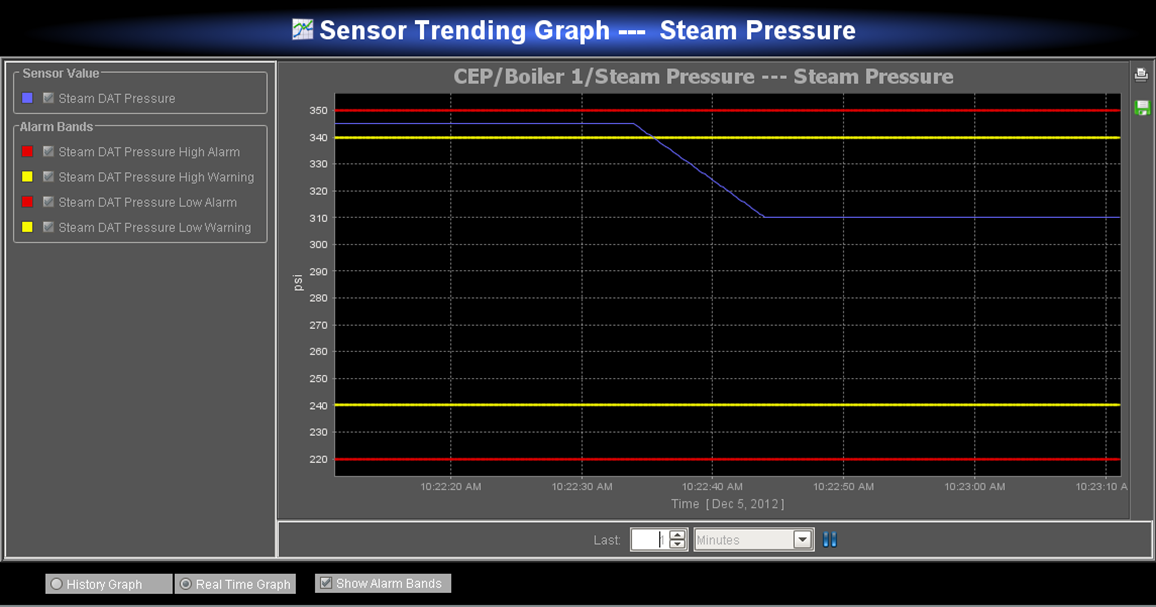 | 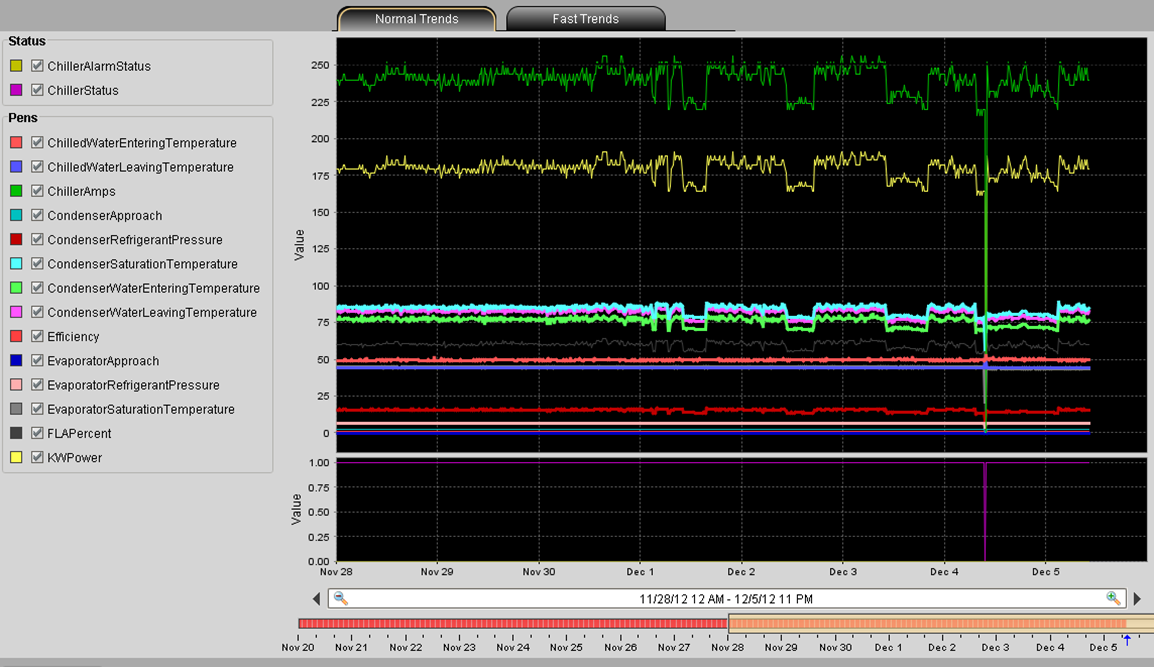 |
Load Shedding
DSOM, in conjunction with building automation systems, has successfully applied power load shedding and smart grid schemes to large complex sites. At a particular site, DSOM is load shedding 10% of the demand for several hours per day and spread over 65 facilities to balance the needs of the facility, the grid, and the energy budget. These routines are driven all the way down to the zone level so no one person or facility has to compromise comfort.
DSOM has also been used to test and operate intelligent grid schemes over large geographic areas.
System Diagnostics
One of the major advantages of the DSOM system is its ability to monitor systems instead of just data points. DSOM has a library of diagnostic faults for both boilers and centrifugal chillers. Faults for air handlers soon will be added as they become more tested and reliable. DSOM's diagnostics are based on baseline models and load conditions for each piece of equipment. The models will learn the normal operation of a piece of equipment and then compare current operations to the baseline. The advantage is that the systems can effectively monitor performance over the full range of leading. Most current systems are only valid during fully loading conditions.
Click images to expand
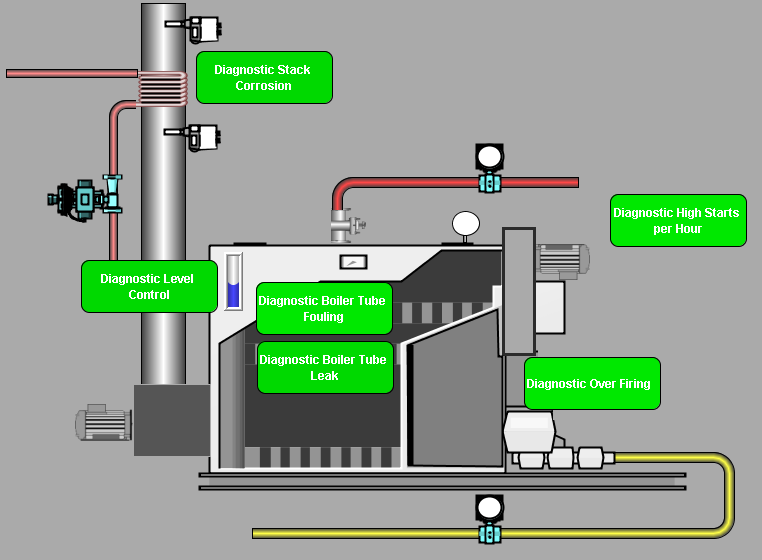 | 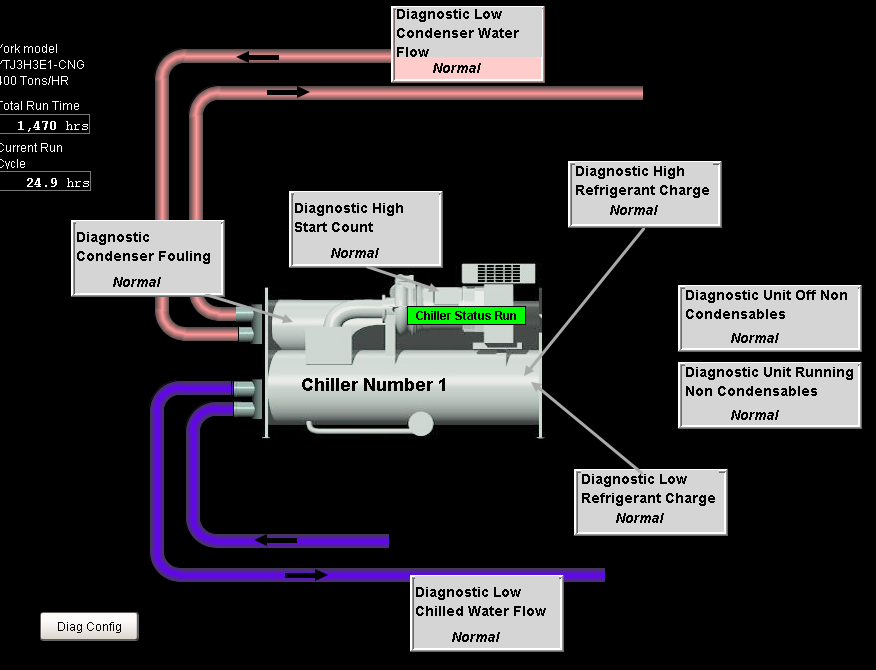 |